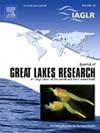Are lakemounts hotspots of productivity and biodiversity?
IF 2.4
3区 环境科学与生态学
Q3 ENVIRONMENTAL SCIENCES
引用次数: 0
Abstract
Oceanic seamounts are hotspots of biodiversity, productivity, and other ecosystem processes. Different hydrodynamic processes leading to physical-biological coupling dynamics occur in these systems making them oases in the open ocean. Due to their disproportional effects on ecosystem function (e.g., high biogeochemical rates), seamounts can also be considered ecosystem control points. On a smaller scale, abrupt offshore reefs in large lake ecosystems (i.e., “lakemounts”) may serve similar roles as seamounts by parallel mechanisms. However, very little is known about lakemounts or the physical-biological coupling that could make these isolated habitats an important source of energy production and biodiversity for offshore, open-water regions of large lakes. We hypothesize that lakemount-induced upwellings serve a similarly important process in lakes as seamounts in the ocean, boosting productivity and biodiversity in offshore areas of large lakes. Identification of these biodiversity hotspots and ecosystem control points, and the mechanisms driving their processes, is vital for understanding how climate change may alter physical-biological coupling and resultant community- and ecosystem-level processes. Such linkages may play a key role for effective and cost-efficient environmental conservation and the maintenance of ecosystem function and services in large lake ecosystems in the face of global change.
湖泊是生产力和生物多样性的热点吗?
海洋海底山是生物多样性、生产力和其他生态系统过程的热点。不同的水动力过程导致这些系统发生物理-生物耦合动力学,使它们成为开阔海洋中的绿洲。由于它们对生态系统功能的不成比例的影响(例如,高生物地球化学速率),海底山也可以被认为是生态系统控制点。在较小的尺度上,大型湖泊生态系统中的突发性近海珊瑚礁(即“湖山”)可能通过平行机制发挥与海山类似的作用。然而,人们对湖山或物理-生物耦合知之甚少,这种耦合可能使这些孤立的栖息地成为大型湖泊近海开放水域能源生产和生物多样性的重要来源。我们假设,湖山引起的上升流在湖泊中发挥着与海洋中的海山类似的重要作用,促进了大型湖泊近海地区的生产力和生物多样性。识别这些生物多样性热点和生态系统控制点,以及驱动其过程的机制,对于理解气候变化如何改变物理-生物耦合以及由此产生的群落和生态系统级过程至关重要。面对全球变化,这种联系可能在有效和成本效益高的环境保护和维持大型湖泊生态系统的生态系统功能和服务方面发挥关键作用。
本文章由计算机程序翻译,如有差异,请以英文原文为准。
求助全文
约1分钟内获得全文
求助全文
来源期刊

Journal of Great Lakes Research
生物-海洋与淡水生物学
CiteScore
5.10
自引率
13.60%
发文量
178
审稿时长
6 months
期刊介绍:
Published six times per year, the Journal of Great Lakes Research is multidisciplinary in its coverage, publishing manuscripts on a wide range of theoretical and applied topics in the natural science fields of biology, chemistry, physics, geology, as well as social sciences of the large lakes of the world and their watersheds. Large lakes generally are considered as those lakes which have a mean surface area of >500 km2 (see Herdendorf, C.E. 1982. Large lakes of the world. J. Great Lakes Res. 8:379-412, for examples), although smaller lakes may be considered, especially if they are very deep. We also welcome contributions on saline lakes and research on estuarine waters where the results have application to large lakes.
 求助内容:
求助内容: 应助结果提醒方式:
应助结果提醒方式:


